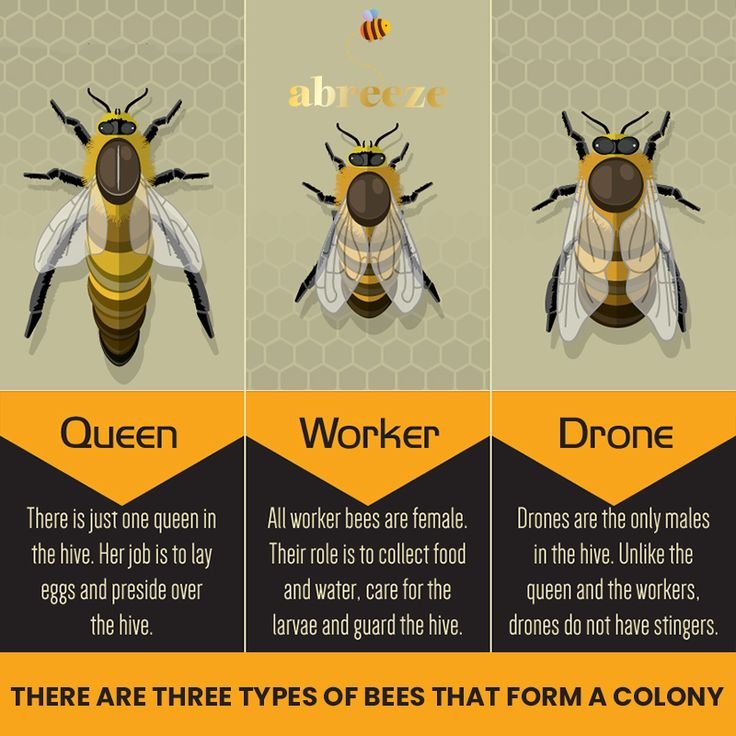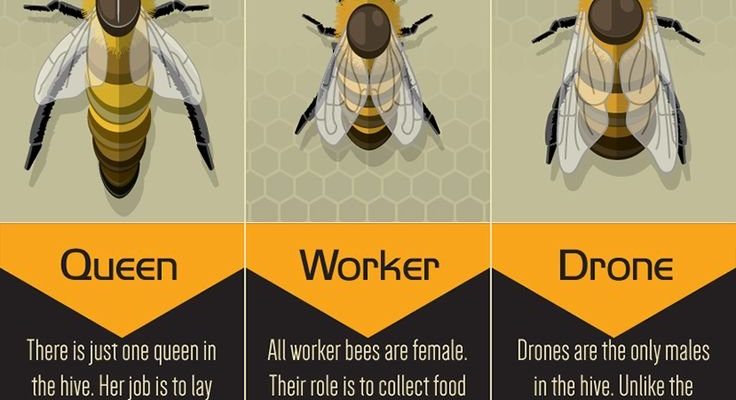
You might be wondering why it matters to know about these different bees. Well, understanding their roles helps us see how these tiny creatures contribute to our environment and how they maintain their colonies. Plus, it’s kind of cool to know that each bee has its own unique purpose. So grab your favorite drink, and let’s dive into the hive!
Who is the Queen Bee?
The queen bee is the heart of the hive. Think of her as the mother and leader all rolled into one. She’s the largest bee in the colony and has a very specific mission: to produce eggs. In fact, she can lay up to 2,000 eggs a day! That’s a lot of responsibility, don’t you think?
The queen’s role also extends beyond just laying eggs. She’s like the hive’s clock, with the ability to regulate its activities. When she’s happy and healthy, the workers buzz around, tending to the hive, foraging for food, and taking care of the brood (the baby bees). When the queen is absent or sick, chaos can reign, as the workers may struggle to keep everything in order.
Interestingly, if the queen dies or is removed, the worker bees can create a new queen by feeding a young larva a special diet known as “royal jelly.” It’s their way of ensuring that their colony survives. Here’s the thing: without a queen, the hive can’t thrive for long.
The Role of Worker Bees
Worker bees are the true multitaskers of the hive. They’re smaller than the queen and can be found doing a variety of jobs throughout their short lives, which typically last around six weeks. Talk about busy!
These bees can do everything from cleaning the hive, feeding the queen and the larvae, to foraging for nectar and pollen. When they’re out gathering food, they even communicate with each other using dance moves! The famous “waggle dance” tells other workers where the best flowers are located.
Worker bees also protect the hive from intruders. They’ll fiercely defend their home against threats, like wasps or even people sometimes. The beauty of it all is that every worker bee understands its duties, all working together to create a flourishing community.
Another cool fact: when a worker bee gets older, she transitions from hive tasks to foraging. It’s like moving from an office job to fieldwork, where she collects nectar and pollen to bring back to the hive. It’s a great example of how every role is important at different stages of life.
Understanding Drone Bees
Now, let’s talk about drone bees. These guys are the males of the hive, and they have one primary job: to mate with a queen from another hive. Drones are larger than worker bees and don’t have stingers. This is because their role isn’t to defend the hive; instead, they focus solely on reproduction.
Interestingly, unlike worker bees, drones do not gather nectar or pollen. You might say they’re the other end of the spectrum in the hive. They spend their time lounging around, waiting for the chance to fly out during mating season. This often happens in a specific area known as a “drone congregation area.”
Once mating occurs, the drone’s life cycle takes a tragic turn. After mating, the drone dies, which sounds harsh but is essential for the continuation of the bee population. In the fall, when resources are low, the worker bees will often kick the drones out of the hive to conserve food. It’s a tough but necessary decision for survival.
The Importance of Each Role in the Hive
You might be thinking—why do we need to know all of this? Each bee has a role that’s crucial for the hive’s survival. The queen produces offspring, the workers keep everything running smoothly, and the drones ensure genetic diversity through mating. Without any one of these roles, the hive can face serious issues.
The dynamics of a beehive are a perfect illustration of teamwork. Each bee knows its function, and with their collective effort, they create a thriving environment. This teamwork plays a significant part in pollinating plants, which is vital for our ecosystem. Without bees, many of our favorite fruits and vegetables wouldn’t exist.
Recognizing these roles helps us appreciate just how interconnected our world is. It’s like the saying goes, “It takes a village.” In this case, it takes a colony!
How Bees Communicate
Communication is key in a beehive, and it goes far beyond buzzing. Bees share information through pheromones and dances. The queen releases pheromones that influence behavior among workers and signal her presence.
For worker bees, the “waggle dance” is a fascinating form of communication. When a bee discovers a good source of nectar, she performs a dance that informs the others about the distance and direction of the flowers. It’s like using a treasure map, and other workers follow the clues to find the bounty.
This intricate communication system is vital. It ensures that everyone in the hive knows what needs to be done, from harvesting food to defending the hive. One small dance step can mean the difference between a successful foraging trip and an empty stomach.
Challenges Faced by Honey Bees
Bees, especially honey bees, face numerous challenges today. Habitat loss, pesticides, and climate change all threaten their populations. When bees struggle to survive, it impacts our food production and natural plant life.
Beekeepers play a pivotal role in supporting bee populations. They manage hives, monitor bee health, and work to educate the public about the importance of bees. There are so many things we can do as individuals, too, like planting bee-friendly flowers and reducing pesticide use in our gardens.
Each bee, whether queen, worker, or drone, plays a part in maintaining the balance in nature. Protecting them isn’t just about saving bees; it’s about safeguarding our environment and food sources.
So, there you have it—the unique roles of the queen bee, worker bee, and drone. Each type of bee works together in harmony to keep their hive thriving. It’s a perfect example of community and teamwork, and it shows how even the smallest creatures have an enormous impact on our world.
Next time you see a bee buzzing by, you might just think of all the hard work they do. The way these little creatures function together is a reminder of how interconnected life on Earth really is. In a world that often feels chaotic, bees offer a shining example of cooperation and purpose. So, let’s do our part to protect them, ensuring they can keep buzzing around for generations to come!

